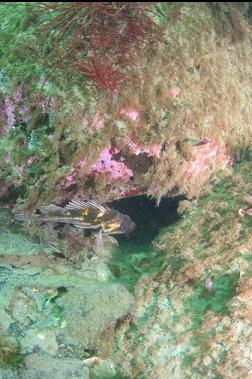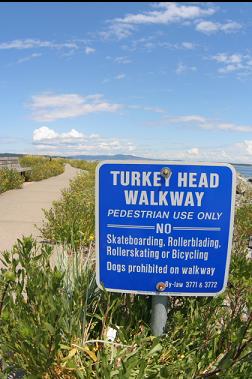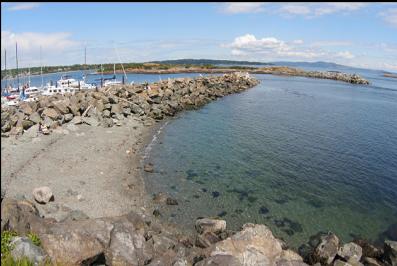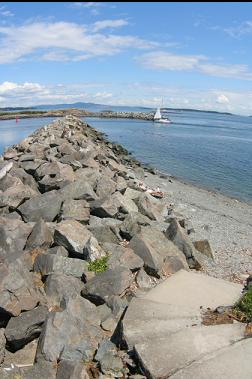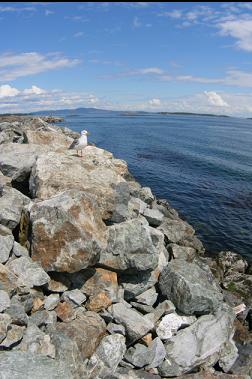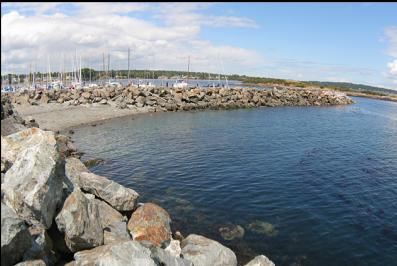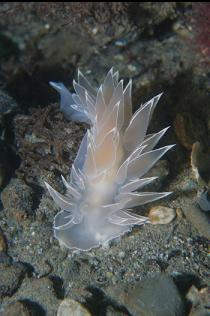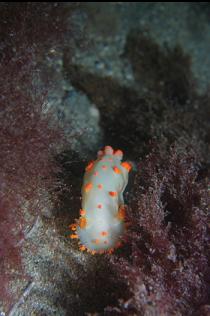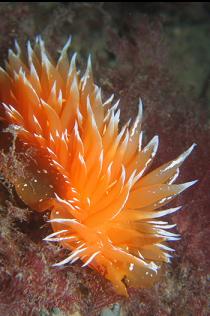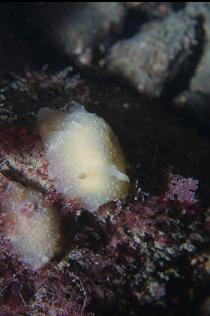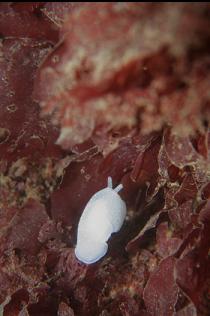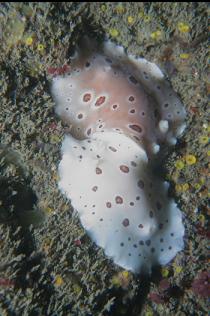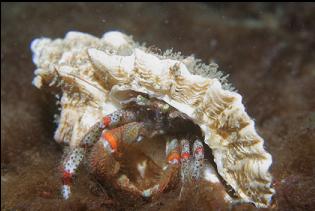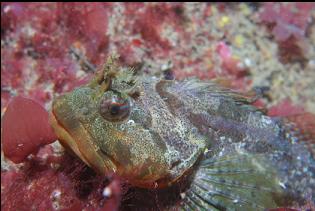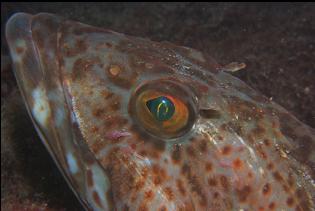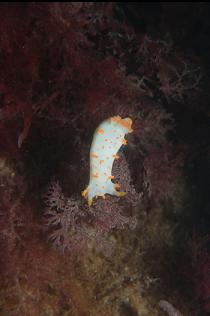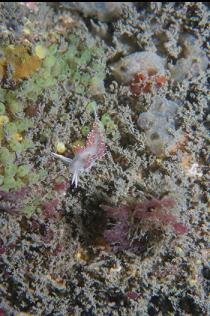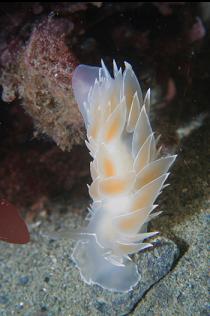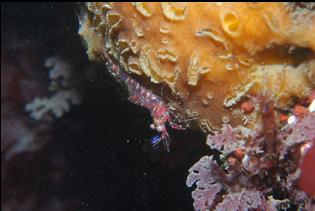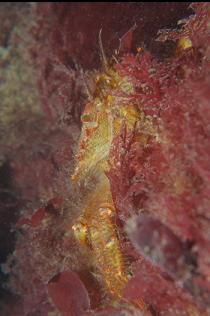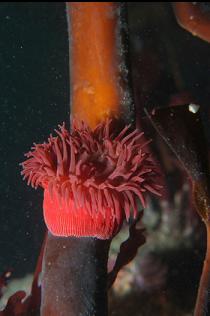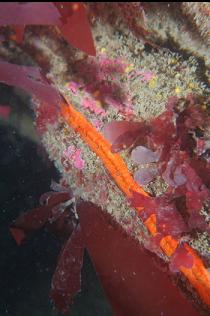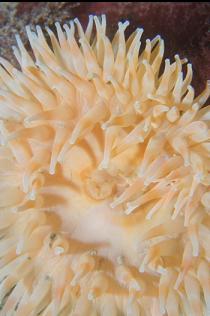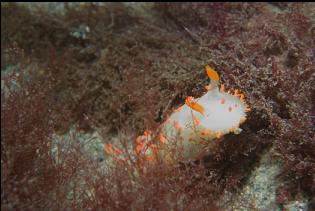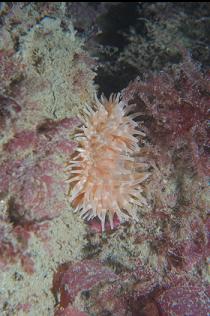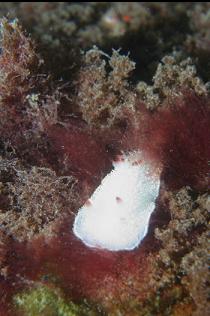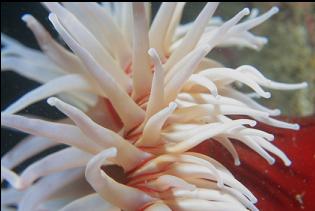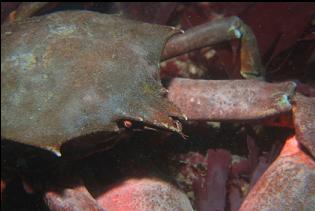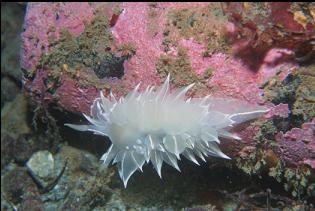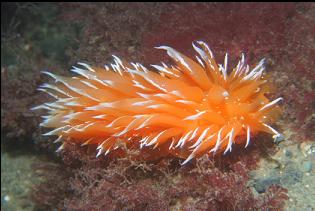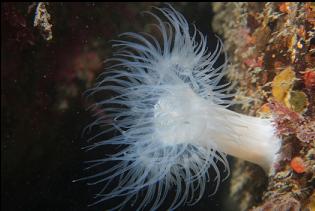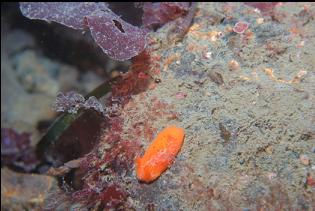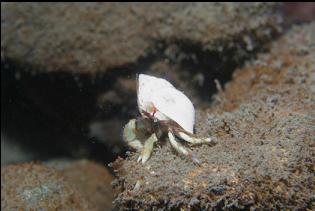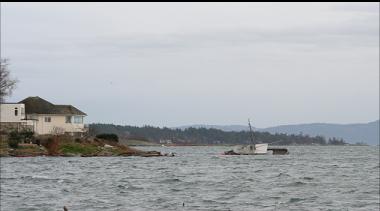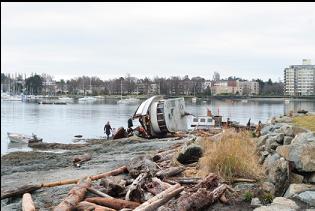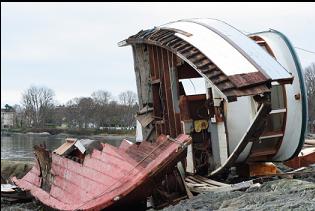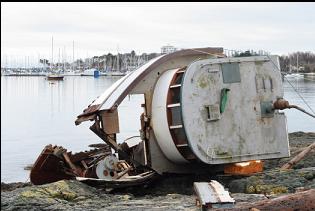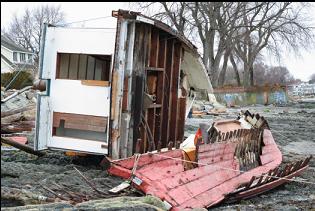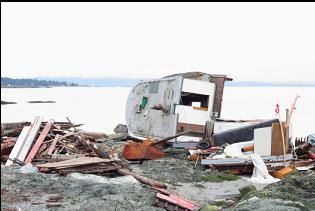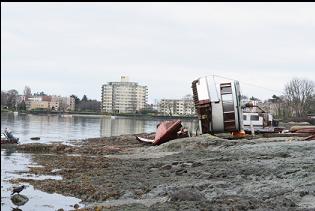This is the short, rubble breakwater that stretches out from the Oak Bay Marina towards Mary Tod Island. The chart shows it bottoming out at around 15-20 feet. This wouldn't normally be a place I'd go out of my way to dive, but I figured the "pile of boulders" slope might have some interesting creatures hiding between the rocks. There's also a decent bull kelp forest around the breakwater. I went on June 22, 2007. There's no shortage of parking at the marina. Every diver in the city could show up and there would still be enough room for a tent city. I went down the short set of steps to a small beach at the tip of the parking lot. I swam out and to the left towards the gap in the breakwater. Visibility was around 10-20 feet (it kept changing as I swam along). The rocky slope was completely covered with bottom kelp so I couldn't see much. I did see a few small lingcod and copper rockfish hiding under the blades of kelp. Above, there was the bull kelp forest with schools of tube snouts and a few perch. At the bottom of the slope (20 feet deep), there was a silty plain of eel grass. I didn't see much life here (not like the eel grass bed at Clover Point). As I reached the gap in the breakwater, the current was ripping through it like crazy. The bull kelp was laying flat on the bottom and wiggling like snakes. At least it was coming towards me and not trying to suck me through the gap into the marina. I tried struggling against it, but it was too strong to swim against and I gave up before I passed out. The rocks in this channel probably had some decent current-loving invertebrates, but the boulders were covered with huge blades of bottom kelp so I couldn't see any. Maybe the layer of kelp acts as a smothering buffer that would prevent the typical invertebrate life from thriving. I guess a dive in the winter would answer the question. I swam back through the bull kelp and saw a school of juvenile black rockfish hovering around under the canopy. I don't know if I'll bother coming here again. I might give it another try in the winter when you can actually see the rock.
I came back in the winter (Feb. 2008). With most of the kelp gone, I could see the rock and there wasn't much living on it. As on all shallow dives in this area, the rocks were mostly covered with red seaweed. In the current-swept channel (the current was strong again when I went), there were a few white plumose anemones scattered around and the occasional clump of yellow sulfur sponge. I hardly saw any fish, just a few small copper rockfish hiding between boulders, a kelp greenling and a lingcod. Of course, there were all the usual tiny sculpins, shrimp and nudibranchs scattered around. Visibility was around 10 feet.


